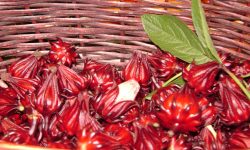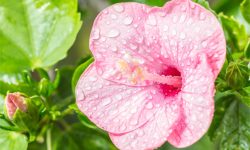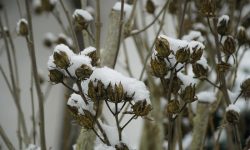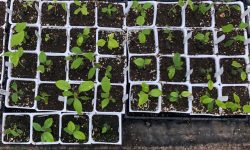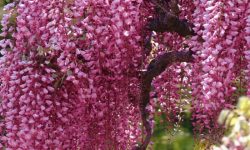Chamomile has enchanted herbalists and tea lovers for centuries with its delicate flowers and soothing properties. Whether you grow German or Roman chamomile, knowing exactly how and when to harvest these daisy-like blooms is essential to unlock their full potential. Proper harvesting not only preserves chamomile’s signature calming aroma but also maximizes its health benefits, ensuring every cup of tea or skincare remedy you create is as effective as nature intended.
In this comprehensive guide, you will discover expert tips on perfect timing, gentle harvesting techniques, and post-harvest care that keep your chamomile fresh and potent. From garden to cup, mastering the art of harvesting chamomile empowers you to enjoy continuous blooms and aromatic tea all season long. Let’s dive into the secrets of harvesting chamomile like a pro for vibrant, fragrant, and therapeutic flowers every time.
Understanding Chamomile and Its Varieties
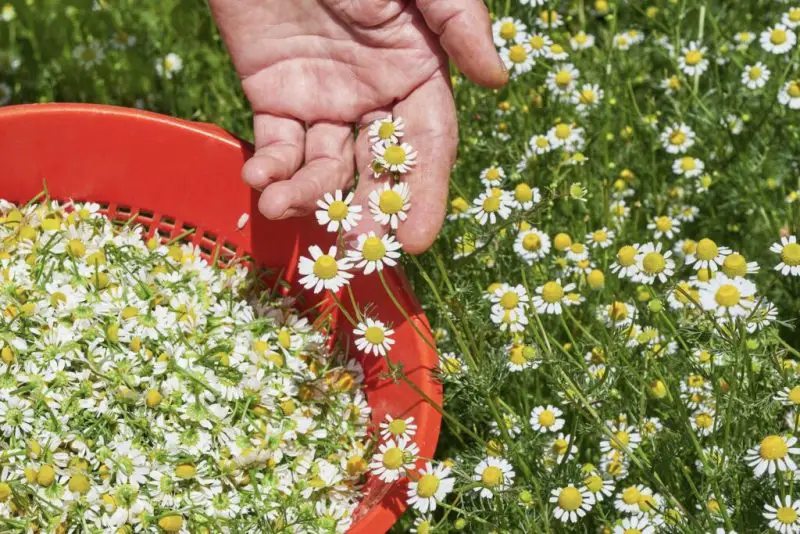
Chamomile is a well-known herb valued for its calming effects and pleasant fragrance. It belongs mainly to two varieties: German chamomile and Roman chamomile. German chamomile is an annual plant that grows quickly and produces many flowers within a single season. It typically reaches heights of one to two feet with a bushy growth habit. This variety is often preferred for making tea due to its sweeter, apple-like flavor and higher essential oil content.
Roman chamomile, on the other hand, is a perennial plant that grows low to the ground and spreads slowly through creeping stems. It forms a dense, fragrant mat of foliage, making it popular as a ground cover or lawn substitute in gardens. Roman chamomile produces smaller flowers compared to German chamomile but is prized for its slightly more bitter and earthy flavor. It thrives best in cooler climates and returns year after year without needing replanting.
Both varieties share similar daisy-like flowers with white petals and yellow centers. However, their growth habits and flavor profiles differ enough to influence how gardeners grow and harvest them. Understanding these differences helps in choosing the right chamomile variety for your needs, whether you want a perennial groundcover or an annual herb with abundant blooms for tea. Both types offer unique benefits and can be used medicinally and culinarily, but knowing their characteristics ensures better cultivation and harvesting results.
Cultivating Chamomile for Better Harvests
Growing healthy chamomile plants starts with good soil, sunlight, and care. Chamomile thrives in well-draining, sandy or loamy soil with moderate fertility. Avoid heavy clay soils or waterlogged areas, as these conditions can stunt growth and reduce flower quality. Both Roman and German chamomile prefer full sun but can tolerate some light shade, especially in hotter climates. Proper watering is essential—keep the soil slightly moist but never soggy to avoid root rot. Regularly removing weeds around your plants prevents competition for nutrients and improves airflow, reducing disease risk. Fertilize lightly with compost or balanced organic fertilizer to support strong growth without encouraging excessive leafy growth at the expense of flowers. Finally, pruning and deadheading spent blooms throughout the season encourage continuous flowering and increase overall yield, giving you more flowers to harvest and enjoy.
When to Harvest Chamomile: Timing is Everything
Recognizing the Ideal Flower Stage
Harvesting chamomile at the perfect flower stage ensures maximum potency and fragrance. Look for flowers with fully opened white petals surrounding a bright yellow center. Avoid flowers that have started to curl, wilt, or droop, as their essential oil content decreases significantly. At peak bloom, the flower heads hold the highest concentration of volatile oils responsible for chamomile’s signature aroma and therapeutic effects. Harvesting too early results in weaker flavor and lower medicinal value. Waiting too long can cause the flowers to dry out naturally on the plant, which diminishes their effectiveness and aroma.
Monitoring your plants regularly helps catch this optimal stage, especially during the morning hours when flowers open fully. Picking flowers at this stage not only preserves the best quality but also encourages plants to produce new blooms, prolonging the harvesting season. Remember, the timing of harvest directly affects the quality of tea, tinctures, or topical products made from chamomile.
Best Time of Day to Harvest
Timing during the day is just as important as recognizing the right flower stage. The ideal time to harvest chamomile is in the early morning after the dew has evaporated but before temperatures rise. Cooler morning temperatures help preserve the delicate essential oils that give chamomile its calming scent and healing properties. Harvesting during the hottest parts of the day causes these volatile oils to evaporate quickly, reducing the flower’s quality.
Dry, sunny mornings provide the best conditions for harvesting. Avoid picking on rainy or overly humid days, as moisture can promote mold growth during drying and storage. Harvesting on dry mornings also ensures that the flowers are crisp and easier to handle. Collecting chamomile flowers under these conditions will result in a more aromatic and potent final product.
Seasonal Considerations
Understanding the seasonal blooming patterns of chamomile varieties helps plan an effective harvesting schedule. German chamomile, an annual, typically blooms profusely from late spring through summer. This rapid growth allows gardeners to harvest multiple times throughout the growing season if they pick regularly. Frequent harvesting also encourages the plant to produce more flowers, maximizing yield.
Roman chamomile, being a perennial, flowers more steadily but produces fewer blooms per harvest. It blooms from late spring to early fall and can survive through winters with proper care. Weather greatly influences flower quality and quantity for both varieties. Heavy rains can damage delicate blooms, while extreme heat can cause flowers to dry out prematurely. Adjust your harvesting frequency based on your local climate conditions, increasing harvests during optimal weather and reducing them during adverse periods.
By carefully timing your harvest to match both flower development and daily weather, you ensure the best quality and quantity of chamomile flowers. This careful approach benefits the flavor, potency, and overall effectiveness of any chamomile products you create.
Preparing for Harvest: Tools and Setup
Essential Tools for Harvesting
Harvesting chamomile does not require complex equipment. A sharp pair of scissors or garden shears lets you cut stems cleanly and gently. Using clean tools helps prevent damage to the plant, promoting healthy regrowth and longer bloom periods. Wearing gloves protects your hands from scratches and any potential skin irritation caused by the plant’s fine hairs or pollen. To avoid crushing or bruising delicate flowers, carry them in a shallow basket or tray with a wide surface. Preparing these basic tools ahead of time makes the harvesting process easier and more organized.
Choosing the Right Location
Selecting the best location to harvest chamomile ensures the quality and safety of your flowers. Choose plants that grow in healthy soil, free from chemical pesticides and herbicides to avoid contamination. Avoid harvesting near busy roads, industrial sites, or polluted areas, as airborne pollutants can settle on the flowers. Look for robust plants with vibrant green foliage and numerous healthy blooms, free of disease or pest damage. Harvesting from well-maintained, pest-free plants guarantees that your chamomile harvest will be pure, potent, and safe for consumption or topical use.
How to Harvest Chamomile: Step-by-Step Technique
Cutting the Flowers
Use a sharp, clean pair of scissors or garden shears to cut chamomile flower heads carefully to avoid damaging the plant. Focus on cutting just above a leaf node or at the junction where the flower stem meets a larger branch. This encourages the plant to send out new growth and produce more flowers during the season. Proper cutting also prevents unnecessary stress on the plant, which helps maintain its health and vigor. German chamomile responds especially well to regular trimming, often blooming multiple times if harvested correctly. Avoid tearing or crushing stems to keep plants strong for continued flower production.
Harvesting Frequency
Regular harvesting every 7 to 10 days during peak bloom optimizes flower yield and plant health. Removing flowers too frequently or all at once can exhaust the plant and reduce future blooms. Leave some flowers and buds on the plant so it can continue photosynthesis and growth. This sustainable harvesting practice allows the plant to replenish energy reserves and produce new buds for subsequent harvests. Keeping a consistent harvesting schedule also prevents flowers from overripening and losing essential oils, ensuring better quality in each batch.
Handling Flowers Gently
Chamomile flowers are fragile and bruise easily, which diminishes their quality and therapeutic properties. Handle the flowers with care when cutting and transferring them to your basket or tray. Use shallow containers to avoid piling flowers too deep, which can crush petals and reduce essential oil content. Avoid dropping or squeezing the blooms, as bruising causes discoloration and a loss of aromatic oils. Gently spreading flowers out during collection and drying helps preserve their shape, color, and fragrance. Treating your harvest carefully ensures you maintain the best flavor, aroma, and potency for tea, tinctures, or topical uses.
Post-Harvest Handling: Drying Chamomile
Why Drying Matters
Drying chamomile properly preserves its delicate essential oils, which give the herb its calming scent and healing effects. Freshly picked flowers contain moisture that promotes mold and bacterial growth if not dried quickly. Moisture also causes degradation of valuable compounds, weakening chamomile’s medicinal strength and flavor. By drying thoroughly, you stabilize the flowers, making them shelf-stable and usable for months or even a year. This process ensures that your chamomile tea, tinctures, or skin products remain effective and safe over time.
Methods of Drying
Air drying is the most gentle and common method for preserving chamomile’s quality. After harvesting, lay the flowers in a single layer on a clean mesh screen, fine wire rack, or paper-lined tray. Place the setup in a warm room with good airflow, avoiding direct sunlight, which breaks down volatile oils and causes color fading. Flip or gently shake the flowers every two to three days to promote even drying and prevent moisture pockets that cause mold. Depending on humidity, drying typically takes 7 to 14 days.
If you want to speed up the process, a food dehydrator set to a low temperature of 95°F to 110°F (35°C to 43°C) works well. This controlled environment removes moisture faster without overheating, which could damage the oils. Avoid oven drying or high heat, as these methods can reduce the potency and flavor of chamomile.
Signs of Proper Drying
You know chamomile is fully dried when the flowers feel dry, crisp, and brittle to the touch. The petals and yellow centers should crumble easily with slight pressure between your fingers. If flowers feel soft, pliable, or moist, they require more drying to prevent mold and spoilage during storage. Also, properly dried chamomile maintains a fresh, sweet, apple-like aroma characteristic of the herb. The color remains bright with white petals and vibrant yellow centers, signaling good quality. Inspect flowers carefully before storing to ensure long shelf life and potent herbal benefits.
Storing Dried Chamomile
Storing dried chamomile properly is essential to maintain its flavor, aroma, and medicinal properties over time. After drying, make sure the flowers are completely moisture-free to prevent mold growth during storage. Use airtight containers such as glass jars with tight-fitting lids or metal tins to protect the chamomile from air and humidity. Store the containers in a cool, dark, and dry place away from direct sunlight, heat sources, and moisture. Exposure to light and heat can degrade the essential oils and cause the flowers to lose potency and color. Label the containers with the harvest date to keep track of freshness and ensure you use the oldest stock first. Properly stored dried chamomile can retain its quality for up to one year, allowing you to enjoy its benefits for many months. Regularly check the stored chamomile for any signs of moisture or mold, and discard any affected material immediately to protect the rest of your supply.
Troubleshooting Common Harvesting Issues
Flowers Getting Crushed or Bruised
One common issue is bruising or crushing the delicate flowers during harvesting. This usually happens when using dull tools or handling the flowers roughly. To avoid this, always use sharp scissors or garden shears for clean cuts. Handle each flower gently when cutting and placing it in the basket. Avoid stacking flowers too deeply in containers to prevent pressure damage. Using shallow trays or baskets with wide surfaces helps keep the flowers intact.
Harvesting Too Early or Too Late
Harvesting flowers too early means they haven’t fully developed their essential oils and fragrance, resulting in weak flavor and potency. Conversely, harvesting too late leads to wilted or drying flowers that lose aroma and quality. To solve this, carefully observe the flower’s stage—pick when petals are fully open but before they begin to curl or droop. Regular monitoring during the bloom period helps catch the perfect timing for harvest.
Moisture Leading to Mold or Spoilage
Harvesting flowers when they are wet from dew, rain, or high humidity can cause mold growth during drying or storage. Flowers that are not dried properly also risk spoilage. To prevent this, harvest chamomile flowers in the morning after dew evaporates, ideally on dry, sunny days. Ensure good airflow during drying and avoid piling flowers too thickly. If needed, use a dehydrator at low heat to speed drying and reduce moisture.
Flowers Falling Off or Dropping During Harvest
Sometimes flowers fall off stems easily during picking or transport due to improper cutting or rough handling. This can reduce yield and quality. To avoid this, cut the flower heads cleanly with sharp scissors just above a leaf node or branch. Place flowers gently into baskets or trays without tossing or compressing. Using containers with wide bottoms and shallow depths minimizes movement and damage during collection.
Pest or Disease Damage Affecting Harvest
Harvesting flowers from plants affected by pests or diseases reduces quality and safety. Damaged flowers often look discolored, spotted, or misshapen. To address this, always inspect plants before harvesting. Choose healthy, vigorous plants free from visible damage or infestation. Implement integrated pest management and maintain good garden hygiene to keep plants healthy throughout the season.
Uneven or Insufficient Harvest
Irregular harvesting or missing flowers at their peak bloom can lead to uneven yields and wasted potential. Some flowers may become overripe while others remain immature. To fix this, establish a regular harvesting schedule, ideally every 7 to 10 days during peak bloom. This ensures consistent flower production and maximizes yield. Keep records or set reminders to avoid missing ideal harvest windows.
Enhancing Your Harvest: Tips for Maximizing Yield
Encouraging Continuous Blooming
To maximize your chamomile harvest, regularly remove spent flowers through deadheading. This process sends a signal to the plant to focus energy on producing new blooms instead of seed formation. By consistently cutting back faded flowers, you extend the flowering period and encourage a steady supply of fresh blossoms. Deadheading also helps maintain plant health by improving air circulation and reducing the risk of disease. This simple but effective technique ensures you get the most out of your chamomile plants throughout the growing season.
Soil and Water Management
Maintaining healthy soil and proper watering habits is key to maximizing chamomile yield. Chamomile thrives in well-draining soils that prevent water from pooling around the roots. Excess moisture can lead to root rot and fungal problems, which reduce flowering and overall plant vigor. Water your plants moderately, allowing the soil to dry slightly between watering sessions. Applying organic compost enriches the soil with nutrients and improves its structure, supporting strong root development and abundant blooms. Monitoring soil moisture and adjusting irrigation accordingly helps maintain optimal growing conditions for your chamomile.
Delicious Recipes Using Chamomile Flowers
Chamomile is not only soothing but also versatile in the kitchen. Start with a classic chamomile tea: steep 1 to 2 teaspoons of dried flowers in hot water for 5 to 10 minutes for a fragrant, calming drink. For a refreshing twist, brew chamomile tea and chill it with lemon and honey as a summer cooler. Chamomile-infused syrups also add delicate floral notes to cocktails and desserts; simply simmer equal parts water and sugar with chamomile flowers, then strain and store. You can bake chamomile into cookies, cakes, or scones by adding dried, finely crushed flowers into your batter for subtle sweetness and aroma. Chamomile also pairs beautifully with honey—try blending chamomile tea with raw honey to soothe your throat or create a gentle glaze for pastries. These recipes showcase chamomile’s culinary charm beyond its traditional medicinal uses, turning your harvest into delightful treats.
Using Your Harvest: Beyond Tea
Using your chamomile harvest goes far beyond simply brewing tea. The dried flowers have a wide range of applications that enhance both health and lifestyle in various ways. For instance, chamomile can be infused into oils or made into salves and creams to soothe skin irritations, such as eczema, minor burns, or insect bites. Its natural anti-inflammatory and antimicrobial properties help calm redness and promote healing. You can also create fragrant sachets or potpourri using dried chamomile flowers to freshen up closets, drawers, or living spaces with a gentle, calming aroma.
In the kitchen, chamomile adds a subtle floral note to baked goods, desserts, and beverages beyond tea. It can be used as an ingredient in homemade syrups, infused honeys, or even cocktails for a unique herbal twist. Some people incorporate chamomile into bath products like bath salts or bath bombs, providing a relaxing soak that soothes muscles and eases stress.
Medicinally, chamomile can be used in tinctures and extracts to support digestion, relieve mild anxiety, and promote better sleep. The versatility of chamomile means your harvest can be transformed into multiple natural remedies and lifestyle enhancers, making it a valuable herb to grow and preserve. Properly dried and stored flowers retain their potency and fragrance, ensuring you can enjoy the benefits of your harvest long after the growing season ends.
FAQ About Harvesting Chamomile for Optimal Quality
What is the best time of day to harvest chamomile for optimal quality?
The best time to harvest chamomile is in the morning after the dew has evaporated but before the midday heat sets in. At this time, the flowers retain the highest concentration of essential oils, preserving their aroma and therapeutic benefits. Harvesting too early or during hot midday hours can reduce potency.
How can I tell when chamomile flowers are ready to be picked?
Chamomile flowers are ready for harvest when their white petals are fully open and the yellow centers look bright and fresh. Avoid picking flowers that have started to wilt, curl, or droop, as these have lost much of their flavor and essential oils. Regular observation during the blooming period helps identify the perfect picking moment.
How should I dry chamomile flowers to maintain their quality?
Spread the harvested flowers in a single layer on a mesh screen or tray in a warm, dry, and well-ventilated area, away from direct sunlight. Turn them gently every few days to promote even drying. Proper drying takes about 7 to 14 days, and the flowers should feel crisp and crumble easily when ready.
Can I use chamomile harvested from plants grown in the garden for skincare?
Yes, garden-grown chamomile is excellent for skincare applications. Its anti-inflammatory and antimicrobial properties make it effective for soothing skin irritations like eczema, minor burns, or insect bites. Always ensure the plants have not been treated with pesticides or chemicals if you plan to use them on your skin.
How often should I harvest chamomile during the growing season?
To maximize yield and maintain healthy plants, harvest chamomile every 7 to 10 days during peak bloom. Avoid removing all flowers at once; leave some blooms to mature and set seed for natural reseeding. Regular harvesting encourages continuous blooming and improves overall plant vigor.
Conclusion
Harvesting chamomile at the right time and with proper technique is key to unlocking its full potential. By carefully timing your harvest, handling flowers gently, drying properly, and storing correctly, you preserve the herb’s delicate aroma and powerful health benefits. Whether you use chamomile for tea, skin care, or aromatherapy, mastering the art of harvesting ensures a bountiful, high-quality supply year after year.


